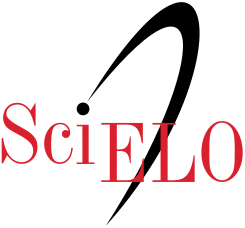Los ojos sangrantes de Chile: Cómo las protestas callejeras forjaron un resonante símbolo de comunicación política
DOI:
https://doi.org/10.32870/cys.v2023.8361Palabras clave:
Producción simbólica, Alineación de encuadre, Movimientos sociales, Resonancia cultural, Trauma ocularResumen
Este artículo describe el proceso de creación del símbolo de los ojos sangrantes en las protestas de Chile en octubre de 2019, cuando cientos de personas terminaron con daños oculares por balines disparados por la policía. Este momento de producción simbólica ha sido poco estudiado en el campo de la comunicación política. Se incorporan conceptos de la tradición culturalista de los estudios de movimientos sociales y se ofrece una observación etnográfica de las protestas que dieron lugar al símbolo.Descargas
Citas
Benford, R. D. (2013). Master Frame. En D. A. Snow, D. Della Porta, B. Klandermans & D. MdAdam (Eds.), The Wiley-Blackwell Encyclopedia of Social and Political Movements. Blackwell Publishing Inc. https://doi.org/10.1002/9780470674871.wbespm126
Benford, R. D. & Snow, D. A. (2000). Framing Processes and Social Movements: An Overview and Assessment. Annual Review of Sociology, 26(1), 611–639. https://doi.org/10.1146/annurev.soc.26.1.611
Bennett, W. L. & Segerberg, A. (2012). The logic of connective action: Digital media and the personalization of contentious politics. Information Communication and Society, 15(5), 739–768. https://doi.org/10.1080/1369118X.2012.670661
Bloomfield, B. P. & Doolin, B. (2013). Symbolic Communication in Public Protest Over Genetic Modification: Visual Rhetoric, Symbolic Excess, and Social Mores. Science Communication, 35(4), 502–527. https://doi.org/10.1177/1075547012469116
Boyle, M. P., McCluskey, M. R., McLeod, D. M. & Stein, S. E. (2005). Newspapers and protest: An examination of protest coverage from 1960 to 1999. Journalism and Mass Communication Quarterly, 82(3), 638–653. https://doi.org/10.1177/107769900508200310
Brown, D. K. & Harlow, S. (2019). Protests, Media Coverage, and a Hierarchy of Social Struggle. International Journal of Press/Politics, 24(4), 508–530. https://doi.org/10.1177/1940161219853517
Brown, D. K. & Mourão, R. R. (2021). Protest Coverage Matters: How Media Framing and Visual Communication Affects Support for Black Civil Rights Protests. Mass Communication and Society, 24(4), 576–596. https://doi.org/10.1080/15205436.2021.1884724
Cárdenas, C. (2016). Representación online del movimiento estudiantil chileno: Reapropiación de noticias en Facebook. Estudios Filológicos, 58(58), 25–49. https://doi.org/10.4067/s0071-17132016000200002
Cárdenas, C. & Pérez, C. (2017). Representación mediática de la acción de protesta juvenil: la capucha como metáfora. Revista Latinoamericana de Ciencias Sociales, Niñez y Juventud, 15(2), 1067–1084. https://doi.org/10.11600/1692715x.1521814092016
Castells, M. (2012). Autocomunicación de masas y movimientos sociales en la era de Internet. Anuari Del Conflicte Social 2011, 1(1), 11–19. http://revistes.ub.edu/index.php/ACS/article/view/6235/7980
Corrigall-Brown, C. & Wilkes, R. (2014). Media exposure and the engaged citizen: How the media shape political participation. Social Science Journal, 51(3), 408–421. https://doi.org/10.1016/j.soscij.2014.03.009
Danley, S. (2021). An activist in the field: Social media, ethnography, and community. Journal of Urban Affairs, 43(3), 397–413. https://doi.org/10.1080/07352166.2018.1511797
Davies, C. A. (2012). Reflexive Ethnography. (2da ed.). Routledge. https://doi.org/10.4324/9780203822272
Di Cicco, D. T. (2010). The public nuisance paradigm: Changes in mass media coverage of political protest since the 1960s. Journalism and Mass Communication Quarterly, 87(1), 135–153. https://doi.org/10.1177/107769901008700108
Ebila, F. & Tripp, A. M. (2020). Naked transgressions: gendered symbolism in Ugandan land protests. Body Politics, 5(1), 25–45. https://doi.org/10.4324/9780429341922-3
Entman, R. M. (2003). Cascading Activation: Contesting the White House’s Frame After 9/11. Political Communication, 20(4), 415–432. https://doi.org/10.1080/10584600390244176
Ganesh, S. & Stohl, C. (2013). From Wall Street to Wellington: Protests in an Era of Digital Ubiquity. Communication Monographs, 80(4), 425–451. https://doi.org/10.1080/03637751.2013.828156
Gasaway Hill, M. L. (2018). The Language of Protest: Acts of Performance, Identity, and Legitimacy. En The Language of Protest: Acts of Performance, Identity, and Legitimacy. Springer International Publishing. https://doi.org/10.1007/978-3-319-77419-0
Gerbaudo, P. (2015). Protest avatars as memetic signifiers: political profile pictures and the construction of collective identity on social media in the 2011 protest wave. Information Communication and Society, 18(8), 916–929. https://doi.org/10.1080/1369118X.2015.1043316
Gherardi, S. (2019). Theorizing affective ethnography for organization studies. Organization, 26(6), 741–760. https://doi.org/10.1177/1350508418805285
González-Bailón, S. & Wang, N. (2016). Networked discontent: The anatomy of protest campaigns in social media. Social Networks, 44, 95–104. https://doi.org/10.1016/j.socnet.2015.07.003
Grömping, M. & Sinpeng, A. (2018). The “Crowd-factor” in connective action: comparing protest communication styles of Thai Facebook pages. Journal of Information Technology and Politics, 15(3), 197–214. https://doi.org/10.1080/19331681.2018.1483857
Günther, J. (2016). Protest as symbolic politics. En K. Fahlenbrach, M. Klimke & J. Scharloth (Eds.), Protest cultures: A companion (pp. 48–64). Berghahn.
Hughes, S. & Mellado, C. (2016). Protest and Accountability without the Press: The Press, Politicians, and Civil Society in Chile. International Journal of Press/Politics, 21(1), 48–67. https://doi.org/10.1177/1940161215614565
Ibrahim, Y. (2009). The art of shoe-throwing: Shoes as a symbol of protest and popular imagination. Media, War and Conflict, 2(2), 213–226. https://doi.org/10.1177/1750635209104655
Jasper, J. M. (2010). Cultural Approaches in the Sociology of Social Movements. En B. Klandermans & C. Roggeband (Eds.), Handbook of Social Movements Across Disciplines (pp. 59–109). Springer. https://doi.org/10.1007/978-0-387-70960-4_3
Johnston, H. & Klandermans, B. (1995). The cultural analysis of social movements. En H. Johnston & B. Klandermans (Eds.), Social movements and culture (pp. 3–24). Routledge.
Kasanga, L. A. (2014). The linguistic landscape: Mobile signs, code choice, symbolic meaning and territoriality in the discourse of protest. International Journal of the Sociology of Language, 2014(230), 19–44. https://doi.org/10.1515/ijsl-2014-0025
Kowalewski, D. (1980). The Protest Uses of Symbolic Politics in the USSR. The Journal of Politics, 42(2), 439–460. https://doi.org/10.2307/2130468
Larson, J. M., Nagler, J., Ronen, J. & Tucker, J. A. (2019). Social Networks and Protest Participation: Evidence from 130 Million Twitter Users. American Journal of Political Science, 63(3), 690–705. https://doi.org/10.1111/ajps.12436
Lester, L. & Hutchins, B. (2009). Power games: Environmental protest, news media and the internet. Media, Culture and Society, 31(4), 579–595. https://doi.org/10.1177/0163443709335201
Little, A. T. (2016). Communication technology and protest. Journal of Politics, 78(1), 152–166. https://doi.org/10.1086/683187
Martin, J. L. & Fernández Trejo, S. (2017). La dimensión acústica de la protesta social: apuntes desde una etnografía sonora. Íconos. Revista de Ciencias Sociales, 1(59), 103–122. https://revistas.flacsoandes.edu.ec/iconos/article/view/2643
McAdam, D. (1994). Culture and social movements. En E. Larana (Ed.), New social movements: From ideology to identity (pp. 36–57). Temple University Press.
McAdam, D., Tarrow, S. G. & Tilly, C. (2001). Dynamics of Contention. Cambridge University Press. https://doi.org/10.1017/CBO9780511805431
Mellado, C., Cabello, P. & Torres, R. (2017). Modelos periodísticos y el uso de actores y fuentes en la cobertura de asuntos sociales en la postdictadura chilena (1990-2010). Comunicación y Sociedad, (28), 59–86.
Melucci, A. (1985). The Symbolic Challenge of Contemporary Movements. Social Research, 52(4), 789–816. http://www.jstor.org/stable/40970398
Mercea, D. (2012). Digital prefigurative participation: The entwinement of online communication and offline participation in protest events. New Media and Society, 14(1), 153–169. https://doi.org/10.1177/1461444811429103
Moser, A. (2003). Acts of resistance: the performance of women’s grassroots protest in Peru. Social Movement Studies, 2(2), 177–190. https://doi.org/10.1080/1474283032000139760
Nencel, L. (2014). Situating reflexivity: Voices, positionalities and representations in feminist ethnographic texts. Women’s Studies International Forum, 43(1), 75–83. https://doi.org/10.1016/j.wsif.2013.07.018
Neumayer, C. & Stald, G. (2014). The mobile phone in street protest: Texting, tweeting, tracking, and tracing. Mobile Media and Communication, 2(2), 117–133. https://doi.org/10.1177/2050157913513255
Perugorría, I. & Tejerina, B. (2013). Politics of the encounter: Cognition, emotions, and networks in the Spanish 15M. Current Sociology, 61(4), 424–442. https://doi.org/10.1177/0011392113479743
Polletta, F. (2006). It was like a fever: storytelling in protest and politics. University of Chicago Press.
Polletta, F. (2008). Culture and movements. The annals of the American Academy of Political and Social Science, 619(1), 78–96. https://doi.org/10.1177/0002716208320042
Riisgaard, L. & Thomassen, B. (2016). Powers of the Mask: Political Subjectivation and Rites of Participation in Local-Global Protest. Theory, Culture and Society, 33(6), 75–98. https://doi.org/10.1177/0263276416651685
Rodríguez, Á., Peña, S., Cavieres, I., Vergara, M. J., Pérez, M., Campos, M., Peredo, D., Jorquera, P., Palma, R., Cortés, D., López, M. & Morales, S. (2021). Ocular trauma by kinetic impact projectiles during civil unrest in Chile. Eye, 35(6), 1666–1672. https://doi.org/10.1038/s41433-020-01146-w
Rovisco, M. (2017). The indignados social movement and the image of the occupied square: the making of a global icon. Visual Communication, 16(3), 337–359. https://doi.org/10.1177/1470357217702088
Sarfati, L. & Chung, B. (2018). Affective Protest Symbols: Public Dissent in the Mass Commemoration of the Sewŏl Ferry’s Victims in Seoul. Asian Studies Review, 42(4), 565–585. https://doi.org/10.1080/10357823.2018.1516732
Shinozaki, K. (2012). Transnational dynamics in researching migrants: Self-reflexivity and boundary-drawing in fieldwork. Ethnic and Racial Studies, 35(10), 1810–1827. https://doi.org/10.1080/01419870.2012.659275
Smith, J., Mccarthy, J. D., Mcphail, C. & Augustyn, B. (2001). From protest to agenda building: Description bias in media coverage of protest events in Washington, D.C. Social Forces, 79(4), 1397–1423. https://doi.org/10.1353/sof.2001.0053
Smolović Jones, S., Winchester, N. & Clarke, C. (2021). Feminist solidarity building as embodied agonism: An ethnographic account of a protest movement. Gender, Work & Organization, 28(3), 917–934. https://doi.org/10.1111/gwao.12453
Snow, D. A. & Benford, R. D. (1988). Ideology, frame resonance, and participant mobilization. En B. Klandermans, H. Kriesi & S. G. Tarrow (Eds.), From structure to action: comparing social movement research across cultures (pp. 197–218). jai Press.
Snow, D. A., Rochford, E. B., Worden, S. K. & Benford, R. D. (1986). Frame Alignment Processes, Micromobilization, and Movement Participation. American Sociological Review, 51(4), 464–481. https://doi.org/10.2307/2095581
Tarrow, S. G. (2011). Power in Movement (3era ed.). Cambridge University Press. https://doi.org/10.1017/CBO9780511973529
Theocharis, Y. (2013). The Wealth of (Occupation) Networks? Communication Patterns and Information Distribution in a Twitter Protest Network. Journal of Information Technology and Politics, 10(1), 35–56. https://doi.org/10.1080/19331681.2012.701106
Tufekci, Z. & Wilson, C. (2012). Social Media and the Decision to Participate in Political Protest: Observations From Tahrir Square. Journal of Communication, 62(2), 363–379. https://doi.org/10.1111/j.1460-2466.2012.01629.x
Turato, E. R. (2005). Métodos qualitativos e quantitativos na área da saúde: definições, diferenças e seus objetos de pesquisa. Revista de Saúde Pública, 39(3), 507–514. https://doi.org/10.1590/S0034-89102005000300025
Valenzuela, S., Arriagada, A. & Scherman, A. (2012). The Social Media Basis of Youth Protest Behavior: The Case of Chile. Journal of Communication, 62(2), 299–314. https://doi.org/10.1111/j.1460-2466.2012.01635.x
Wagner, T. (2008). Reframing Ecotage as Ecoterrorism: News and the Discourse of Fear. Environmental Communication, 2(1), 25–39. https://doi.org/10.1080/17524030801945617
Waisbord, S. & Peruzzotti, E. (2009). The environmental story that wasn’t: Advocacy, journalism and the asambleísmo movement in Argentina. Media, Culture and Society, 31(5), 691–709. https://doi.org/10.1177/0163443709339462
Wilkes, R., Corrigall-Brown, C. & Myers, D. J. (2010). Packaging Protest: Media Coverage of Indigenous People’s Collective Action. Canadian Review of Sociology, 47(4), 327–357. https://doi.org/10.1111/j.1755-618X.2010.01243.x
Wouters, R. (2013). From the street to the screen: Characteristics of protest events as determinants of television news coverage. Mobilization, 18(1), 83–105. https://doi.org/10.17813/maiq.18.1.y6067731j4844067
Wouters, R. & Van Camp, K. (2017). Less than Expected? How Media Cover Demonstration Turnout. International Journal of Press/Politics, 22(4), 450–470. https://doi.org/10.1177/1940161217720773
Yarbrough, D. (2020). “Nothing About Us Without Us”: Reading Protests against Oppressive Knowledge Production as Guidelines for Solidarity Research. Journal of Contemporary Ethnography, 49(1), 58–85. https://doi.org/10.1177/0891241619857134
Descargas
Publicado
Cómo citar
Número
Sección
Licencia

Esta obra está bajo una licencia internacional Creative Commons Atribución-NoComercial 4.0.
Los autores/as que publiquen en esta revista aceptan las siguientes condiciones:
De acuerdo con la legislación de derechos de autor, los autores conservan los derechos de autoría y otorgan a Comunicación y Sociedad el derecho de primera comunicación pública de la obra. Comunicación y Sociedad no realiza cargos a los autores por enviar y procesar artículos para su publicación.
Los autores/as pueden realizar otros acuerdos contractuales independientes y adicionales para la distribución no exclusiva de la versión del artículo publicado en Comunicación y Sociedad (por ejemplo incluirlo en un repositorio institucional o publicarlo en un libro) siempre que indiquen claramente que el trabajo se publicó por primera vez en Comunicación y Sociedad.











